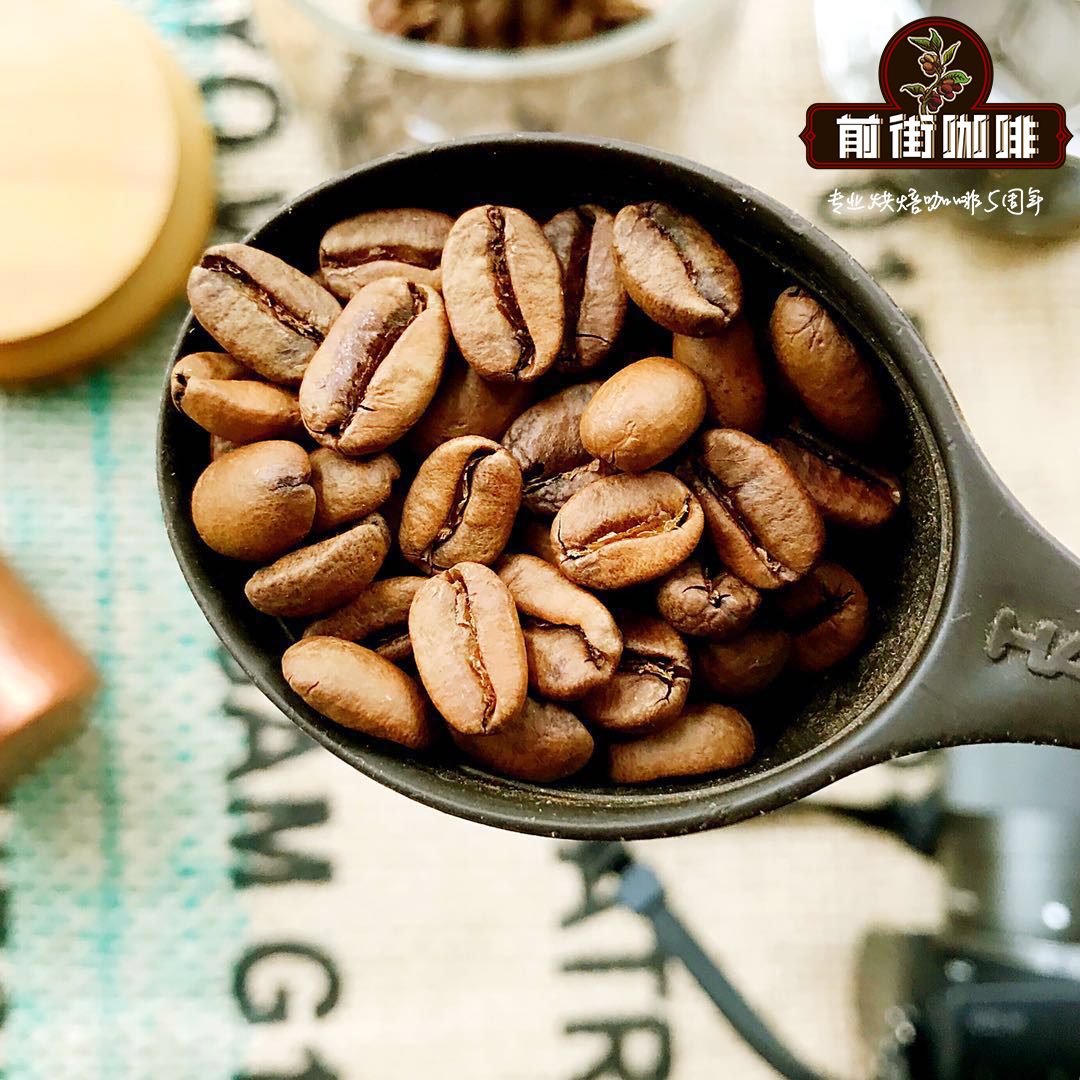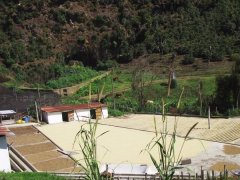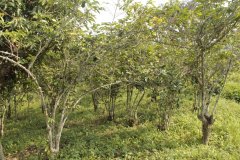Suggestion on brewing parameters of hand-brewed coffee in Porsa Manor, Guatemala
For professional baristas, please follow the coffee workshop (Wechat official account cafe_style)
Huehuetenango
Guatemala Finca La Bolsa
Chateau Polsa, Guatemala
Producing area: Vivette Nanguo
Manor: Polsa Manor
Altitude: 1500 m
Variety: Pacamara
Treatment: washing
| 01 | production area profile |

Guatemala is bordered by Mexico to the north and El Salvador and Honduras to the south. This country, which mainly grows and exports coffee, has fertile soil suitable for coffee trees, suitable climate, abundant water resources and high altitude planting height. Its territory also has many well-known producing areas, such as Antigua, Vivette Nanguo, Koban and so on. Vivette Nango and Antigua are best known to coffee lovers. Vivette Nan Fruit is located in the highlands of northwestern Guatemala, growing at an altitude of 1800-2100 meters. It is the highest coffee-producing area in the country and is famous for producing high-quality beans.
Introduction to Polsa Manor

Polsa Manor, located in the province of Laliberta in Guatemala, produces coffee of stable quality. the coffee produced by this estate has won a number of coffee cup test awards, and their coffee is often seen in various barista competitions.
Polsa Manor is adjacent to the most famous Incht estate in Guatemala, and the quality produced is indistinguishable and is often difficult to choose in a variety of competitions. In 1956, Dr. George Jorge Vides (Dr. Jorge Vides) bought the fertile land and began his career of growing coffee. Now it is the third generation of Mr. Renardo Ovalle to manage the estate.

The Peters family located the estate at its core in the valleys of the Cuchumatanes Mountains, through which two rivers pass, setting up many daily institutions along the riverbank, such as schools, farmhouses, hydroelectric farms and, most importantly, raw bean washing plants and drying plants.

Of the current land area of about 100 hectares, 80 hectares are used to grow coffee trees and use organic compost and water sources produced by the natural environment. Most of the local coffee trees are 15 years old, with three to four pruning times a year, three to four times of pest control, three to four times of fertilization, and four times of harvest during the harvest season, unlike other Guatemalan estates. because the mountain is very steep, all the work must be done by hand, which strengthens the quality of coffee, but also makes the production work very hard.
In 2002, Polsa Manor won second place in the Excellence Cup in Guatemala, winning the title with a high score of 94.98.
In 2005, Polsa Manor was selected by Anacafe and German channel DWTV as the protagonist of Vivetnam's coffee documentary to shoot how to produce high-quality coffee in Guatemala, which is now well known in coffee producing areas around the world.

This batch is the micro-batch [washed Pacamara] of the cheetah project, with a global limit of 138 kg. Excellent coffee varieties, excellent geographical environment, coupled with meticulous processing, to get this rare [micro-batch] boutique coffee beans.
02 | processing method

Coffee washing began in the mid-18th century. In the process of washing, the pulp of the coffee fruit should be removed first, then the residual mucous membrane on the inner pericarp should be removed by fermentation trough, and the beans should be washed and dried.
The washing method can remove impurities and defective beans through each step, so the appearance of raw beans is uniform and is generally considered to be of high quality. But the biggest disadvantage of washed coffee is that coffee beans are easy to get the stench of fermentation during fermentation. Beans will be stained with the smell of fermentation, most of which are due to the lack of management and maintenance of the fermentation tank. The microbes that soak the coffee beans with mucous membrane on the endocarp in the fermentation tank will cause the coffee beans to be stained with fermented flavor.
In addition, the equipment cost of coffee washing method is high, and the washing steps are also quite laborious.
03 | Analysis of raw beans

Pacamara is a hybrid of Pacas Pacas and Marago Rippi Maragogype found in El Salvador in 1950.
First bred by researchers in El Salvador in 1958, Pacamara is a rare artificially bred excellent variety, with both the excellent taste of Pacas and the large size of Maragogype, and the bean body is at least 70% or 80% the size of the bean. The biggest characteristic of this variety is that it is sour, lively and tricky, sometimes biscuit and sometimes fruity, with excellent thickness and grease.

04 | Baking analysis
The variety of this coffee is giant bean [Pacamara] with relatively large granules and high density, and the newly produced kidney beans have high moisture content. In the baking process, the heat absorption is also relatively fast, the Mena reaction process is also relatively fast, the yellowing point is about 5 minutes, in the first batch of baking, the bean temperature is relatively high, the bean temperature is 200 degrees, and the firepower is also relatively high. in the baking process, gradually adjust the firepower according to the need, in the bean into the yellowing point, the end of dehydration, before an explosion respectively adjust the firepower to avoid bean burns. Under this operation method, the dehydration time of coffee is relatively shortened, the heating rate is 6-8 degrees every 30 seconds, and enters an explosion earlier, preserving more flower and fruit aroma, clean and bright acidity.

Roaster Yangjia 600g semi-direct fire
Enter the pot at 200 degrees Celsius, adjust the firepower to 160 degrees after opening the throttle for 30 seconds, keep the throttle unchanged, the temperature return point is 1: 45 ", keep the firepower, at 5: 00" the bean surface turns yellow, the smell of grass disappears completely, enter the dehydration stage, the firepower is reduced to 130 degrees, and the throttle is adjusted to 4.
The 7th '50th' was dehydrated, and when the firepower dropped to 80: 00, ugly wrinkles and black markings appeared on the bean surface, and the smell of toasted bread obviously changed to coffee, which can be defined as a prelude to an explosion. At this time, listen carefully to the sound of the explosion point. Start the explosion at 8: 15 ", turn the firepower down to 50, and the throttle is fully open 5 (the firepower should be very careful, not so small that there is no burst sound), and develop 1: 50 after an explosion." Put it in the pot at 194 degrees.

This polsa is amazing, sour and soft, with sour aromas of lemon, passion fruit and plums, with aromas of brown sugar, and the taste is constantly changing with the change of temperature.

05 | Cooking analysis
Recommended method: hand flushing
Degree of grinding: small Fuji 3.5
Filter cup: V60
Water temperature: 90 ℃
Gouache ratio: 1:15
Duration: 1, 39, 55, 2, 39, 00.
Brewing and cooking techniques:
Steam with 30g water for 30s, pour water to 110g for stages, and slowly inject water to 225g
That is to say, 30 Mutual 110, 225.
Bean grinder
Grinding degree
Powder quantity
Filter cup
BG
4M
15g
V60
Water temperature
Stuffy steam
The second stage of water quantity
The third stage of water quantity
Total time 2:00
90 degrees
30g water for 30s
80g
115g
Total water volume: 225g
Sweetness: ☆☆
Acidity: ☆☆
Bitterness: ☆
a. Tasting flavor:
Peaches, peanuts, cereal
Flavor radar map:
Bitterness 1.5
Acidity 3.5
Sweetness 4
Alcohol degree 3
Yu Yun 2
b. The result of cooking:
This is a very suitable for hand-brewed coffee, the water temperature of about 85 degrees, happens to be able to explain her temperature, as long as leisurely circle injection of water can enjoy her delicacy.
The colorful aroma of tropical fruit can be easily detected when brewing, and the excellent sweetness is a distinctive feature of Valmar.
After the entrance, the sweetness of cantaloupe can be felt on the tongue, and the juicy fresh peach penetrates into the throat, leaving the sour feeling of apples, which softens as the temperature drops, and finally fills the nose with the smell of peanuts and oatmeal. It is a coffee with both fruit and nut rhymes.
c. Basic information on beans:
Valma Manor in Guatemala comes from the Koban rainforest, which is located in Alta Verapaz province, 220km from Guatemala City, which is famous for its unspoiled natural environment and unique microclimate. The treatment method is to collect the semi-fermentation method and then dry it in the sun.
Although the general impression and concept is that the cleanliness and flavor level of coffee treated by semi-fermentation method is between washing method and solarization method. But what is special about Valmar is that she is as clean as washed coffee and has a hierarchical flavor comparable to that of sun-treated beans.
The variety of this coffee is Kaddura, which is very adaptable and can be harvested easily without shading trees. You can read it in teacher Han's New Edition of Coffee. In fact, Kaddura's wind reviews were not as good as Huang Bobang in the past, but with the progress of planting technology, without taking the price as the yardstick, Alice himself believes that the flavor will not be lost to Huang bourbon, and it has its own style.
Qianjie 2018 micro-batch of Guatemala Vivette Nanguo Polsa Pacamara coffee beans freshly roasted

Purchase link: https://item.taobao.com/item.htm?spm=a1z10.5-c-s.w4002-15673140460.17.68306d59Dof4Cg&id=571863079054
Important Notice :
前街咖啡 FrontStreet Coffee has moved to new addredd:
FrontStreet Coffee Address: 315,Donghua East Road,GuangZhou
Tel:020 38364473
- Prev

Valma Manor Kaddura Koban Rain Forest Coffee, Guatemala A hundred-year-old Valma family
For the exchange of professional baristas, please follow the Coffee Workshop (official Wechat account cafe_style) Manor Valma is located in the Copan region of Guatemala, a perfect producing area with steep mountains, verdant rain forests and charming floral scent, including an unspoiled natural environment and a unique microclimate. The comparison between the high-altitude mountains and the high-humidity tropical rain forest makes the place more humid.
- Next

Description of the latest batch Flavor of Honey Cooperative AA in Top Sika producing area of Pearl Dou in Kenya
Professional barista exchange please follow the coffee workshop (Wechat official account cafe_style) Kenya Pearl beans Top Sika producing area Honey Cooperative (Kenya PB Top Thika Asali Cooperative) flavor description: grapefruit, mulberry, caramel, candied-like sweet and sour taste, full and juicy, crisp and sweet. Production area: Sika production area (Thika) producer: honey cooperation
Related
- Detailed explanation of Jadeite planting Land in Panamanian Jadeite Manor introduction to the grading system of Jadeite competitive bidding, Red bid, Green bid and Rose Summer
- Story of Coffee planting in Brenka region of Costa Rica Stonehenge Manor anaerobic heavy honey treatment of flavor mouth
- What's on the barrel of Blue Mountain Coffee beans?
- Can American coffee also pull flowers? How to use hot American style to pull out a good-looking pattern?
- Can you make a cold extract with coffee beans? What is the right proportion for cold-extracted coffee formula?
- Indonesian PWN Gold Mandrine Coffee Origin Features Flavor How to Chong? Mandolin coffee is American.
- A brief introduction to the flavor characteristics of Brazilian yellow bourbon coffee beans
- What is the effect of different water quality on the flavor of cold-extracted coffee? What kind of water is best for brewing coffee?
- Why do you think of Rose Summer whenever you mention Panamanian coffee?
- Introduction to the characteristics of authentic blue mountain coffee bean producing areas? What is the CIB Coffee Authority in Jamaica?

